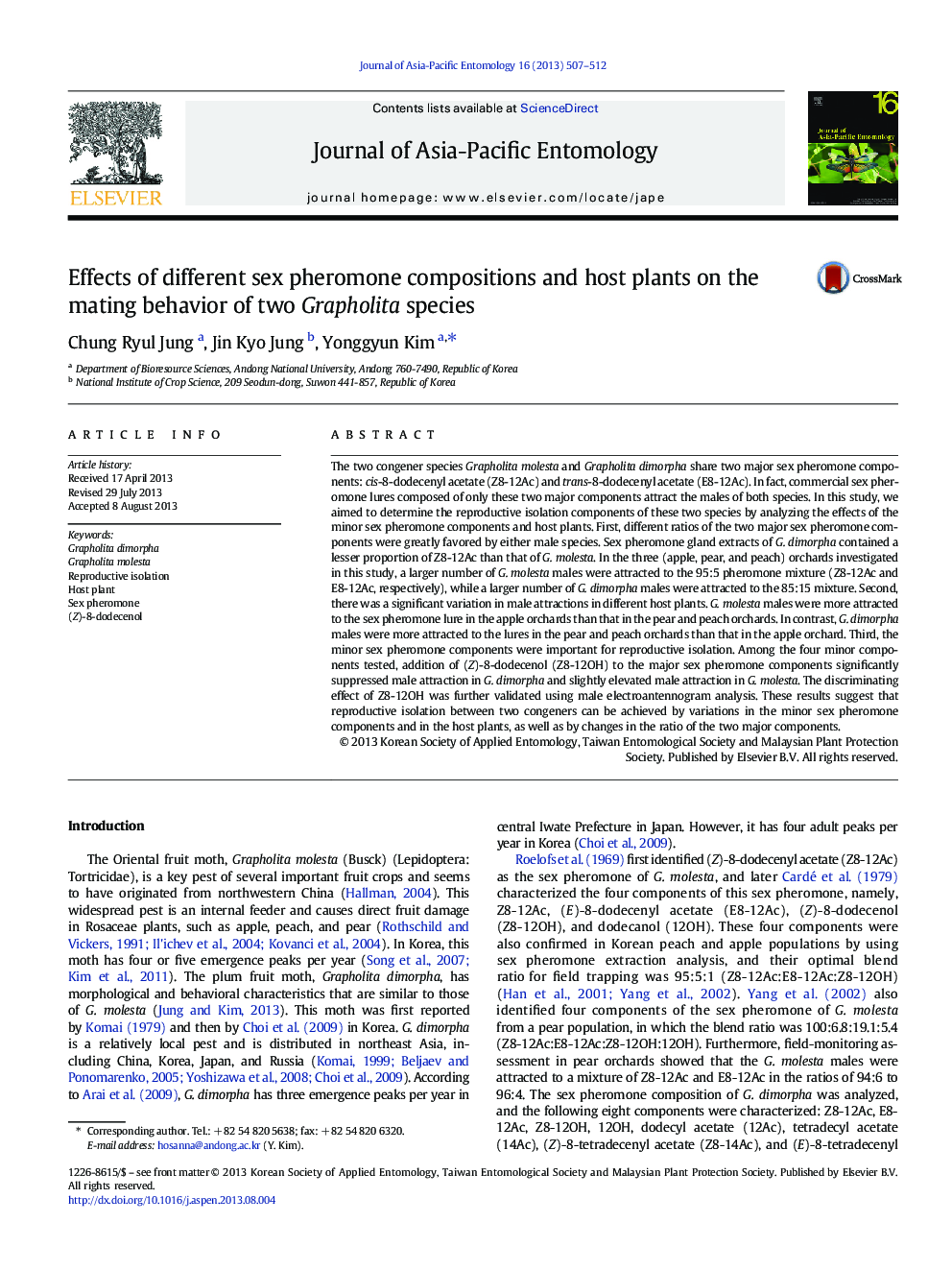| Article ID | Journal | Published Year | Pages | File Type |
|---|---|---|---|---|
| 4524501 | Journal of Asia-Pacific Entomology | 2013 | 6 Pages |
•Difference in major sex pheromone component ratios•A differential minor sex pheromone component•Host plant preference•Speciation between Grapholita molesta and Grapholita dimorpha
The two congener species Grapholita molesta and Grapholita dimorpha share two major sex pheromone components: cis-8-dodecenyl acetate (Z8-12Ac) and trans-8-dodecenyl acetate (E8-12Ac). In fact, commercial sex pheromone lures composed of only these two major components attract the males of both species. In this study, we aimed to determine the reproductive isolation components of these two species by analyzing the effects of the minor sex pheromone components and host plants. First, different ratios of the two major sex pheromone components were greatly favored by either male species. Sex pheromone gland extracts of G. dimorpha contained a lesser proportion of Z8-12Ac than that of G. molesta. In the three (apple, pear, and peach) orchards investigated in this study, a larger number of G. molesta males were attracted to the 95:5 pheromone mixture (Z8-12Ac and E8-12Ac, respectively), while a larger number of G. dimorpha males were attracted to the 85:15 mixture. Second, there was a significant variation in male attractions in different host plants. G. molesta males were more attracted to the sex pheromone lure in the apple orchards than that in the pear and peach orchards. In contrast, G. dimorpha males were more attracted to the lures in the pear and peach orchards than that in the apple orchard. Third, the minor sex pheromone components were important for reproductive isolation. Among the four minor components tested, addition of (Z)-8-dodecenol (Z8-12OH) to the major sex pheromone components significantly suppressed male attraction in G. dimorpha and slightly elevated male attraction in G. molesta. The discriminating effect of Z8-12OH was further validated using male electroantennogram analysis. These results suggest that reproductive isolation between two congeners can be achieved by variations in the minor sex pheromone components and in the host plants, as well as by changes in the ratio of the two major components.
Graphical abstractFigure optionsDownload full-size imageDownload as PowerPoint slide
